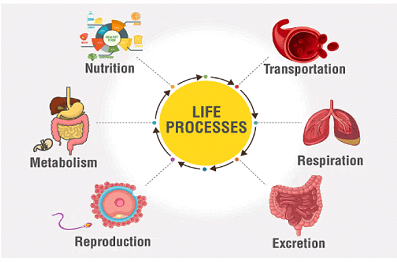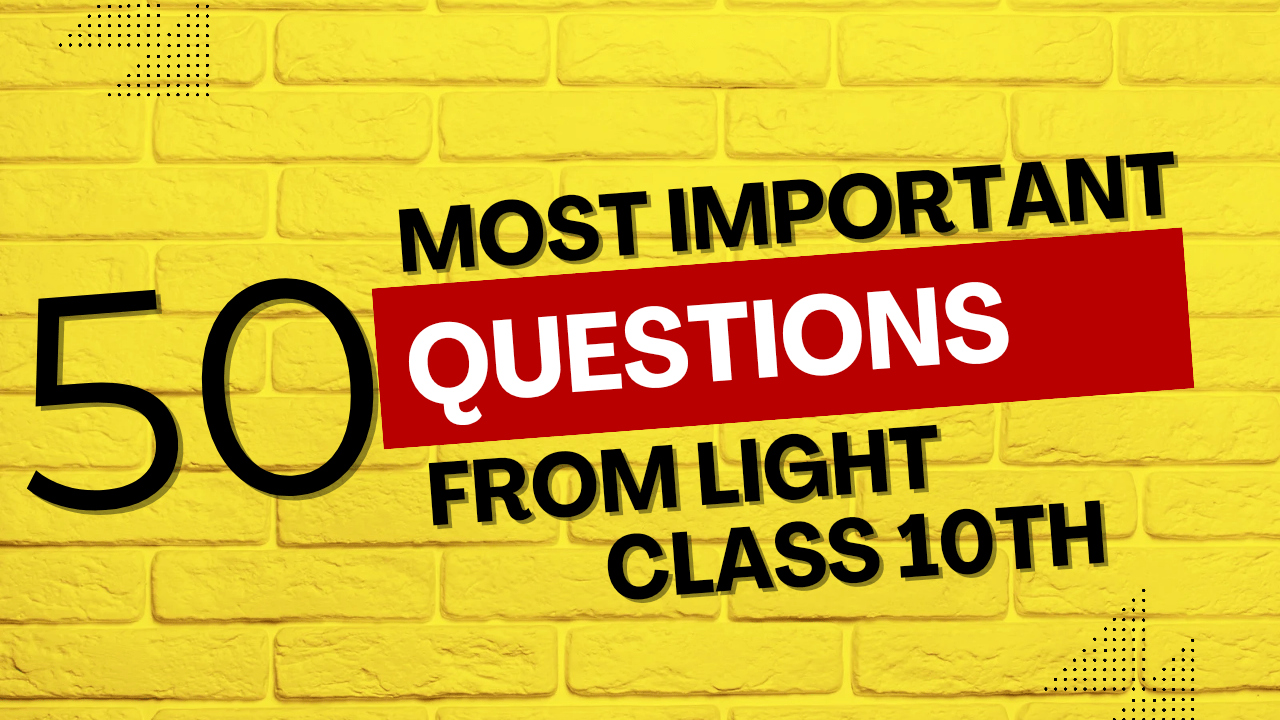CBSE Science sample paper class 10 2025 with solutions
Section A (20 MCQs | 1 Mark Each)
- Chemical Reactions: Identify the type of reaction (e.g., decomposition, displacement).
- Acids & Bases: pH value of a common household item (e.g., lemon juice).
- Life Processes: Role of villi in the human digestive system.
- Electricity: Equivalent resistance in a parallel circuit.
- Heredity: Example of a sex-linked trait.
- Environment: Primary consumer in a food chain.
- Light: Lens power calculation (concave/convex).
- Magnetic Effects: Direction of magnetic field using the Right-Hand Thumb Rule.
- Periodic Table: Element with electronic configuration 2,8,3.
- Carbon Compounds: Functional group in aldehydes.
(Topics: Chemical reactions, electricity, genetics, ecology, optics)
Section B (6 Questions | 2 Marks Each)
- Chemistry: Write balanced equations for (a) Photosynthesis, (b) Rusting.
- Biology: Differentiate between tropic and nastic movements.
- Physics: Why does the sky appear blue? Explain with a diagram.
- Biology: Draw a reflex arc and label its components.
- Chemistry: Define homologous series with an example.
- Environment: Role of decomposers in an ecosystem.
Section C (7 Questions | 3 Marks Each)
- Physics: Calculate resistance in a series-parallel circuit (numerical).
- Biology: Explain double fertilization in plants with a diagram.
- Chemistry: Process of electrolysis in refining copper.
- Physics: Image formation by a convex lens (ray diagram).
- Biology: Mendel’s monohybrid cross (Punnett square).
- Environment: Energy flow in a grassland ecosystem (pyramid).
- Chemistry: Crystalline vs. amorphous carbon (uses of graphite/diamond).
Section D (3 Case Studies | 4 Marks Each)
- Case 1 (Chemistry): Acid rain effects on marble structures (chemical reaction + mitigation).
- Case 2 (Biology): Pedigree analysis for blood group inheritance (genotypes/phenotypes).
- Case 3 (Physics): Solar cooker efficiency (principles, advantages over LPG).
Section E (3 Questions | 5 Marks Each)
- Biology: Human respiratory system (pathway of air + alveoli diagram).
- Physics: Electric motor working (Fleming’s Left-Hand Rule + labeled diagram).
- Chemistry: Corrosion and rancidity (preventive measures with examples).
Key Focus Areas for 2025
- Application-Based Learning: Numerical problems (resistance, lens formula), case studies on real-world issues.
- Diagrams: Reflex arc, reproductive systems, electric circuits, ray diagrams.
- Environment: Ozone depletion, sustainable practices (3Rs, solar energy).
- NCERT Exemplar: Practice activity-based questions (e.g., pH testing, genetics experiments).
Preparation Tips:
- Revise NCERT textbooks thoroughly, especially highlighted activities and examples.
- Practice previous years’ papers and sample case studies.
- Focus on balancing equations, genetic crosses, and circuit diagrams.
Best of luck! 🌟
CBSE Science sample paper class 10 2025 with solutions
CBSE Class 10 Science Practice Paper 2025
Time: 3 Hours | Max Marks: 80
General Instructions:
- This question paper consists of 39 questions in 5 sections.
- Section A: 20 MCQs (1 mark each).
- Section B: 6 Very Short Answer questions (2 marks each).
- Section C: 7 Short Answer questions (3 marks each).
- Section D: 3 Case-Based Questions (4 marks each).
- Section E: 3 Long Answer questions (5 marks each).
- All questions are compulsory.
- Draw neat, labeled diagrams wherever required.
- Use log tables and calculators not permitted.
Section A (20×1=20 Marks)
Choose the correct option:
- Chemical Reactions:
Which reaction is an example of a combination reaction?
(a) 2H2O→2H2+O22H2O→2H2+O2
(b) 2Mg+O2→2MgO2Mg+O2→2MgO
(c) Fe+CuSO4→FeSO4+CuFe+CuSO4→FeSO4+Cu
(d) CaCO3→CaO+CO2CaCO3→CaO+CO2 - Acids & Bases:
The pH of a solution is 3. It is diluted by adding water. What will be its pH?
(a) Remains 3
(b) Increases
(c) Decreases
(d) First increases, then decreases - Life Processes:
Which structure increases the surface area for absorption in the small intestine?
(a) Alveoli
(b) Nephron
(c) Villi
(d) Stomata - Electricity:
The equivalent resistance of two 4Ω resistors in parallel is:
(a) 8Ω
(b) 2Ω
(c) 4Ω
(d) 16Ω
(Remaining MCQs cover topics like magnetic field direction, sex-linked disorders, ozone depletion, lens power, etc.)
Section B (6×2=12 Marks)
- Chemistry: Write balanced equations for:
a) Burning of magnesium ribbon in air.
b) Reaction of sodium hydroxide with hydrochloric acid. - Biology: Differentiate between aerobic and anaerobic respiration.
- Physics: Why is a convex mirror used as a rear-view mirror?
- Ecology: Define bioaccumulation and its impact on food chains.
- Chemistry: What is a redox reaction? Give an example.
- Biology: Name two hormones involved in regulating blood sugar levels.
Section C (7×3=21 Marks)
- Physics: Calculate the resistance of a wire if a 6V battery draws a current of 0.5A.
- Biology: Explain the process of photosynthesis with a chemical equation and a labeled diagram of the chloroplast.
- Chemistry: Describe the formation of ionic bonds using the example of sodium chloride.
- Physics: Draw a ray diagram to show the image formed by a concave mirror when the object is placed at its center of curvature.
- Biology: What is evolution? Explain Darwin’s theory of natural selection.
- Environment: How do industries contribute to water pollution? Suggest three preventive measures.
- Chemistry: Write three differences between diamond and graphite.
Section D (3×4=12 Marks)
- Case Study (Chemistry):
A student tested two solutions X (pH=2) and Y (pH=6) with universal indicator.
a) Which solution is acidic?
b) What happens when solution X reacts with zinc metal?
c) Suggest a natural indicator to test these solutions.
d) How can solution Y be converted to a neutral solution? - Case Study (Biology):
A farmer observed stunted growth in crops despite using fertilizers. Soil testing revealed low pH.
a) What is this condition called?
b) Suggest a chemical to treat the soil.
c) Name two crops that can grow in acidic soil.
d) How does soil pH affect nutrient availability? - Case Study (Physics):
A household uses five 20W LED bulbs for 6 hours daily.
a) Calculate the energy consumed in kWh in a day.
b) Suggest two ways to reduce electricity consumption.
c) Why are LED bulbs preferred over filament bulbs?
Section E (3×5=15 Marks)
- Biology:
a) Draw a diagram of the human heart and label its four chambers.
b) Explain the process of double circulation. - Physics:
a) State Fleming’s Left-Hand Rule.
b) Describe the working of an electric generator with a labeled diagram. - Chemistry:
a) Write the chemical names and formulas of baking soda and washing soda.
b) How is baking soda produced industrially?
c) Mention two uses of washing soda.
CBSE-Style Guidelines for Students
- Read Instructions Carefully: Allocate time per section (e.g., 40 mins for Section A).
- Clarity in Answers:
- Use bullet points for 2/3-mark questions.
- For 5-mark questions, write in paragraphs with subheadings.
- Diagrams Matter: Use a pencil and ruler for diagrams. Label all parts clearly.
- Keyword Focus: Highlight terms like oxidation, biodiversity, Ohm’s Law in answers.
- Revise NCERT: 90% of questions are directly from NCERT textbooks and exemplars.
- Case Studies: Read the passage twice. Answer sub-questions sequentially.
- Time Management:
- Sections A+B: 45 mins
- Sections C+D: 60 mins
- Section E: 30 mins
- Revision: 15 mins
Preparation Tips:
- Practice numericals on resistance, electricity, and light (lens/mirror formulas).
- Memorize chemical equations (photosynthesis, respiration, corrosion).
- Revise diagrams (heart, reflex arc, electric circuits).
- Solve sample case studies on environmental issues (e.g., Ganga pollution, ozone depletion).
Best of luck! 🌟
Stay calm, manage time wisely, and double-check your answers!
CBSE Class 10 Science 2025 Guess Paper Solutions
Pro Tip: These solutions follow CBSE marking scheme patterns. Focus on keywords highlighted in green!
Section A: MCQ Solutions
1. Correct answer: (b) 2Mg + O₂ → 2MgO
Explanation: Combination reaction involves two/more reactants forming single product.
2. Correct answer: (b) Increases
Dilution reduces H⁺ ion concentration, increasing pH toward neutral (7).
3. Correct answer: (c) Villi
Finger-like projections in small intestine enhancing absorption surface area.
Section B: 2-Mark Solutions
11. Chemistry Equations
a) 2Mg + O₂ → 2MgO
b) NaOH + HCl → NaCl + H₂O
b) NaOH + HCl → NaCl + H₂O
12. Aerobic vs Anaerobic Respiration
• Aerobic: Occurs in mitochondria, produces CO₂ + H₂O + 36 ATP
• Anaerobic: Occurs in cytoplasm, produces lactic acid/ethanol + 2 ATP
• Anaerobic: Occurs in cytoplasm, produces lactic acid/ethanol + 2 ATP
Section C: 3-Mark Solutions
17. Resistance Calculation
Using Ohm’s Law: V = IR → R = V/I
R = 6V/0.5A = 12Ω
R = 6V/0.5A = 12Ω
18. Photosynthesis Process
Equation: 6CO₂ + 6H₂O → C₆H₁₂O₆ + 6O₂
Chloroplast Diagram Tips:
1. Draw oval shape with double membrane
2. Label thylakoids and stroma
3. Show light absorption in grana
1. Draw oval shape with double membrane
2. Label thylakoids and stroma
3. Show light absorption in grana
Section D: Case Study Solutions
24. Acid-Base Case Study
a) Solution X (pH=2) is acidic
b) Zn + H₂SO₄ → ZnSO₄ + H₂↑ (gas bubbles observed)
c) Turmeric or litmus
d) Add weak base like calcium hydroxide
b) Zn + H₂SO₄ → ZnSO₄ + H₂↑ (gas bubbles observed)
c) Turmeric or litmus
d) Add weak base like calcium hydroxide
Section E: 5-Mark Solutions
27. Human Heart
Heart Diagram Guidelines:
1. Show 4 chambers (2 atria, 2 ventricles)
2. Label aorta, pulmonary artery, vena cava
3. Indicate oxygenated/deoxygenated blood with red/blue arrows
Double Circulation:1. Show 4 chambers (2 atria, 2 ventricles)
2. Label aorta, pulmonary artery, vena cava
3. Indicate oxygenated/deoxygenated blood with red/blue arrows
1. Pulmonary circuit (heart-lungs)
2. Systemic circuit (heart-body)
Exam Strategy:
1. Spend 1 minute per MCQ
2. Underline key terms in long answers
3. Always write units in numericals
1. Spend 1 minute per MCQ
2. Underline key terms in long answers
3. Always write units in numericals


